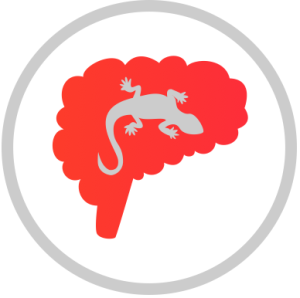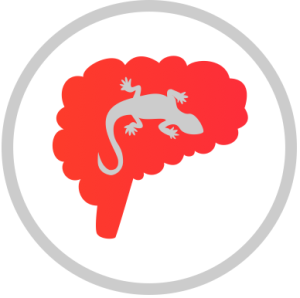Being an Intentional Leader – Why it Matters
Being an intentional leader prevents you from reacting poorly and allows you to respond effectively, in the moment.
Given the pressures you face and the stress you’re under, at times you’re prone to react straight from the limbic system, also known as the lizard brain. This lower part of the brain deals with your fight, flight, freeze response. It sees the world in black and white – threat, no threat.

The prefrontal cortex is your higher brain region. It processes and prepares your responses to complex situations. The prefrontal cortex takes a bit longer to process and respond than the lizard brain does. But unless you’re facing an immediate life threatening event, it’s best to take several seconds, even a minute, to think about how to respond effectively. Otherwise you’ll spend time cleaning up your lizard brain’s mess.
If you’d like to be an intentional leader versus a lizardly one, it helps to have a few tips at-the-ready to stave off the lizard and guide you to your thinking brain. A number of my clients deal with this same challenge to respond versus react. Together we’ve developed four guiding questions.
Question 1: What’s happening?
This question asks about the psychological and emotional dynamics. It recognizes the state of everyone involved in the interaction, yourself included.
- Are they confused?
- Is he anxious?
- Is she angry?
- I’m feeling defensive. Why do I perceive this as an attack?
Example: It’s 6:00 AM. I’m awakened by a text message. Needless to say I’m not happy. The sender was clearly angry.
Question 2: What’s the best possible outcome, at this time?
Whatever you do, or don’t do, will change the quality of what was happening before you took action. Your response will escalate the anger or calm people down. It will heighten anxiety or lower it. So consider what you want the outcome to be.
Example: Back to the angry text. The best possible outcome is to calm things down and address the situation later. A 6:00 AM pre-caffeine conversation will not be productive.
Question 3: How do I need to show up here?
We are, metaphorically speaking, a collection of characters. Each one is well-suited to handle different types of interactions.
Example: To de-escalate the anger and buy some time, I need to call on The Calm Observer part of myself. I need to avoid The Emotional One. So, my text response reads:
“It’s 6:00 AM. Your text message woke me up. It’s probably best to discuss this by phone.”
Question 4: What does this group, or person, need from me?
When someone is “pushing your buttons”, one of the best ways to stop them, is to ask yourself what they need. This doesn’t mean you’ll provide it, but your focus will change.
Example: The person who sent the 6:00 AM text is truly upset about something I did, or something they think I did. Whatever violation I may have committed, they need to know I care.
My text message ends with “I’m not sure what I did or what happened, but it’s important that we talk about it. When are you available today?”
The “today” part is critical.They, and this situation, have my immediate attention. This speaks to how much I care and how important they are.
Several hours later, we discuss what happened. The texter is calm. It turns out I accidentally did something that could potentially become a big problem for him. I apologize and we come up with a plan to ensure the mistake won’t happen again. He knows I care. The relationship is in tact. The problem is solved.
This outcome is far better than the mess my lizard brain would have left behind.


